Sexual Anatomy: The Basics
Sexual Anatomy – The Basics
Sexual anatomy is not something to be ashamed of! It is one of the gifts of a monogamous relationship and of consensual adult sex!

For you to get the most out of your sexual experiences, we must first understand our body. If you have never spread your legs and looked at your genitals in a mirror, that is step one.
There is nothing to be ashamed of. It is just one part of your body. You must know your sexual anatomy, and then you get to share it with your consenting adult partners!
Also, sex in porn is not real. It is entertainment and a movie. Question the media you are consuming if you believe your relationship and sex life is not to par with those around you.
Let’s start with female sexual anatomy, or the anatomy of those assigned female at birth.
Women’s Bodies or Those Assigned Female at Birth
The Vulva
The vulva is the main visible component of female sexual anatomy. It is commonly referred to as the vagina, and the vagina is specifically just the hole that the babies come out of, the menstruation comes out of, and one of the places of pleasure.
The vulva is the external part of the female genitals. The mons veneris (meaning “hill of Venus,” the Roman goddess of love) is the top part of the vulva where pubic hair grows. There is often a layer of fatty tissue on this pubic bone to protects from the impact of penetrative sexual intercourse.
Vulva
The outer lips (labia minora) go around to protect the inside.
Pulling these outer lips open, you will expose the inner labia (labia minora), which do not have any hair on them.
All women’s lips have different colors, sizes, and shapes. The inner lips are there to protect the clitoris, urethra, and the vagina.
Usually the lips (both inner and outer) are sensitive to touch.
The Clitoris
The clitoris is the only organ in the body whose sole function is for pleasure. It looks like a small button right at the top of the outer lips. There is a piece of skin, just inside the inner labia, known as the clitoral hood. This protects the clitoris from getting too much direct stimulation. The clitoris is the most excitable part of the female genitalia, because this is where most pleasurable sensation comes from. There are more nerve endings in the clitoris than in the head of a man’s penis, which makes it extremely sensitive to touch and stimulation. The clitoris goes deep inside the body as well (the internal clitoris).
The Urethra
The urethra is a tiny hole about an inch to two inches below the clitoris. This is where women urinate from and where female ejaculate comes from.
The Vagina
Under the urethra is a bigger hole, which is the vagina. This is where women are penetrated during digital (fingers) or penetrative (penis) intercourse. It is where blood comes from during a menstrual period, and it is part of the birth canal.
The vagina has most of its nerve endings in the first third of the opening. If the entire vagina had numerous nerve endings, it would be extremely painful to give birth through the vaginal canal.
The lack of nerve endings in the vagina is what accounts for the difficulty many women have in achieving orgasm through vaginal penetration alone.
Vaginal orgasms stem from stimulation of the internal clitoris. Most women also need direct stimulation of the external clitoris. Therefore, women should not feel bad or inadequate if vaginal penetration alone is not enough. Women should be able to explain exactly what they need to their partners if they cannot achieve orgasm through vaginal penetration alone.
Bartholin’s Glands
Bartholin’s glands are the first step in lubrication. It is similar to pre-come (male ejaculate) for women. These two small glands are near the bottom of the vulva with openings on either side of the vagina. They are located underneath the skin, and they provide a small amount of lubricant.
The G-spot
It is more of an area than a spot. Some indicate that you can locate the G-spot by inserting your fingers into your vagina and make the “come here” motion.
When a woman is aroused, this area can get harder, and the texture can change. Some believe that the G-spot is the location of the internal bulbs of the clitoris, which are located behind the left and right walls of the vagina. Therefore, the G-spot is mostly an area… an area about two inches in on the top part of the vagina, facing the internal clitoris region.
Stimulating this at the same time as the external clitoris can create tons of pleasure for women.
The G-spot is one of the most famous areas of female sexual anatomy!
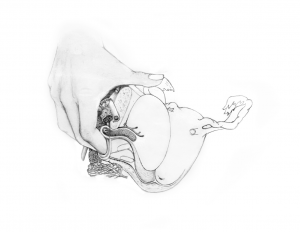
The Hymen
A piece of tissue that lines the vaginal opening. It is the “cherry” that is referred to in the common “popped her cherry” slang expression. The hymen is no barometer on whether or not a woman is a virgin. This tissue can be stretched with a finger, tampon, or anything inserted into the vagina. Sometimes the hymen wears away naturally, and sometimes it remains so thick that it makes first penetration extremely painful. If intercourse continues to be painful after penetrated, there is a chance that this barrier has not been broken, and a women can see a gynecologist, who can help with this.
The Perineum
The piece of skin from the bottom of the vulva to the anus is called the perineum. There are not many nerve endings here for women, and sometimes doctors cut through this skin to open the canal for vaginal births.
The Anus
The anus has numerous sensitive nerve endings. Many people practice anal sex, and it is important to note that the anus also has the capacity to be penetrated as the vagina does. The only difference is that the anus does not self-lubricate, as does the vagina.
Therefore, when engaging in anal sex, make sure to use a lot of lubricant.
Male Sexual Anatomy or the Anatomy of Those Misgendered Male at birth.
The Penis
In the United States, there is a tendency to put a good deal of emphasis on penis size. In popular media the question is often “How big is he?” which implies the underlying notion that being bigger is better.
Bigger is not always better when we talk about sexual anatomy.
It is is your relationship with the penis that matters.
If you or your partner’s penis gives you pleasure, it is perfect regardless of size.
Circumcision
It is currently debated in this country whether a man should have a circumcised penis or not. The popular narrative seems to elevate circumcised penises as better or more desirable.
Many women indicate that non-circumcised penises have led to more pleasure for them and their partners, because non-circumcised penises are more lubricating than circumcised ones.
Some women prefer the look of a circumcised penis, while others do not notice much of a difference. There is nothing to be concerned about if you encounter a non-circumcised penis. It just has some extra skin called the foreskin, which covers the head of the penis while flaccid, and retracts back when the penis is erect. But being a circumcised penis or not is just an aesthetic detail in the sexual anatomy.
Erections
If a women is in a sexual encounter with a male partner and he is not hard, that is totally normal. Pornography depicts men as always ready to go.
They see a naked woman and are hard almost immediately. Life is not like that.
If you see that your partner’s penis is soft, but he is in the moment with you and giving other signs that he is into the sexual act and enjoying himself, I encourage you to let go of the notion that it should be hard immediately and continue to enjoy each other sexually.
A soft penis is not an automatic indication that your partner is not into the sexual experience.
Soft penises are an indication that blood has not yet entered the penis.
Desire begins in the mind.
Getting upset about a physiological response that those with penises may not have mental control over ruins the moment more than a soft penis does.
Do not put pressure on yourself unless it becomes a constant problem that you can never get an erection while with a partner.
If this is the case, it may be time to discuss what is happening and consult a physician, urologist, and a sex therapist.
Difference Between Orgasming and Ejaculating
Most people think that it is easy to tell when men have orgasmed, because they ejaculated. Although most men orgasm and ejaculate at the same time, this is not always the case. There is a difference between orgasming and ejaculation. Ejaculation is the fluid that is dispelled from the body.
Orgasm can be the emotional, mental, and physical part of this process. People can achieve full-body orgasms using breath-work and relaxation of the mind and body. Sometimes an ejaculatory and full-body orgasm can occur together, and other times, the male body can orgasm without the penis ejaculating at all.
Conclusions
It is important to understand your anatomy and your partner’s body. Feel free to talk with your friends and sexual partner about your body. Instead of shaming the body, as many are taught to do while growing up, praise it as well as the body of your sexual partner. If you feel attracted to your partner, make sure to say which exact body parts you value. Doing this will also set up the framework for you to appreciate your own body.
Are you ready to learn more and unlock a more satisfying experience?
BLISS: Proven Methods for Improving the Female Orgasm
About Life Coaching and Therapy
Life Coaching and Therapy (LCAT) is a therapy and coaching practice that transforms our clients lives through our flexible. Multi-technique approach and pleasure-skills training provided by systematically-trained and licensed therapists!
 Get to know our founder and owner, Amanda Pasciucco, (a.k.a. The Sex Healer) PhD, Licensed Marriage and Family Therapist (LMFT), and an AASECT Certified Sex Therapist (CST) that has developed innovative therapy programs and therapy videos that get results.
Get to know our founder and owner, Amanda Pasciucco, (a.k.a. The Sex Healer) PhD, Licensed Marriage and Family Therapist (LMFT), and an AASECT Certified Sex Therapist (CST) that has developed innovative therapy programs and therapy videos that get results.
Our team of compassionate, licensed therapists and certified sex therapists help all clients who visit us for a variety of personal, relationship, intimacy and sex problems.
LCAT provides on-site appointments, as well as video chat and text therapy programs.
Learn more about how LCAT can help improve your life at What We Do.


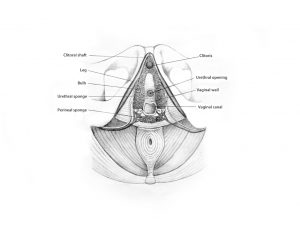
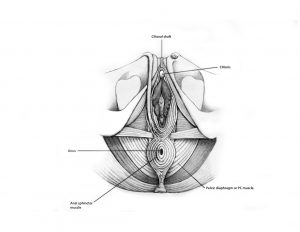


 Just as the sexologist can refer you to another professional, other professional can refer you to the sexologist. This happens when they find that a certain sexual problem exceeds their field of work.
Just as the sexologist can refer you to another professional, other professional can refer you to the sexologist. This happens when they find that a certain sexual problem exceeds their field of work.


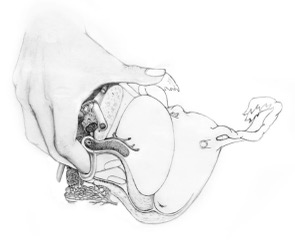

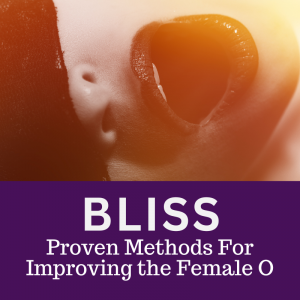





 Have you ever wondered why athletes tend to have more energy, less stress and a regular sleep cycle?
Have you ever wondered why athletes tend to have more energy, less stress and a regular sleep cycle?






